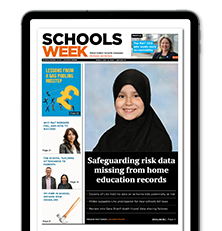From early in the Covid-19 pandemic, it became clear that, while young people were at low risk of physical harm from the virus, many would be vulnerable to psychological impacts from this period of uncertainty. Lockdown and school ‘closures’ upended many young lives, with the pandemic exacerbating already rising mental health needs.
At Anna Freud, a mental health charity for children and young people, we tracked research globally from January 2020 to understand the pandemic’s impact on young lives. A worrying picture quickly emerged. In the UK, 43 per cent of children and young people reported increased anxiety in April/May 2020.
In response to this increasing need, we launched the Schools and Colleges Early Support Service in September 2020. The online service supports young people aged 11 to 25 experiencing mild-to-moderate mental health difficulties, like anxiety and low mood, aiming to intervene early before problems become entrenched. It also supports staff, parents and carers to help them understand young people’s experiences and how best to support them.
Here’s what we’ve learned from almost five years and nearly 200 schools and colleges supported through the service.
Early intervention is key
There has been an 11.5 per cent increase in referrals to the service for students having trouble attending school due to emotional or mental health issues since September 2022, which reflects national trends.
As with all mental health issues, early intervention is crucial. We’ve been helping schools and parents identify warning signs of non-attendance, such as students avoiding certain lessons or changes in behaviour on Sunday evening.
Our understanding of how to support students experiencing non-attendance has developed too, and we work with schools and college staff to take a holistic approach and develop a plan to support attendance. We’ve found a relational approach – which focuses on building relationships and creating a safe environment – can have a positive impact.
Rising self-harm disclosure
Since 2022, we’ve also seen an 8 per cent increase in the number of students disclosing that they have engaged in self-harming behaviours. While we don’t know what role the pandemic has played in this, we do know that self-harm is a manifestation of psychological distress and a clear sign someone is struggling. Data from the service indicates some groups, including girls, are at increased risk.
In response, our training course for school staff on self-harm prevention has been helping staff to tackle stigma and to develop robust risk assessments and evidenced practice.
Support for families
We always wanted the service to provide wellbeing support for the whole school or college community, including parents and carers, to help them support their children at home. Over the past few years, we have offered a range of support for families, but feedback indicated most wanted psychoeducation on common mental health problems.
In honing our response, we’ve learned that making support as accessible as possible to the families of students is vital, as is aligning topics with need. Our most popular webinar topics are on low mood and anxiety, which are the issues we receive most referrals for.
A whole-school approach
Education staff tell us that working with experts from the service has helped them to enhance the overall wellbeing provision they provide in their setting, supporting a shift towards a whole-school approach to mental health.
Part of this approach involves developing supportive relationships and a sense of belonging across the whole school or college community. Importantly, this includes monitoring and supporting staff mental health and wellbeing.
While we’re now five years on from the first lockdown, school staff continue to see the fallout. Sadly, nothing has yet brought about a decrease in young people’s mental health needs nationally.
Indeed, as well as the long-term impacts from the pandemic, other issues are only adding to anxieties. These include climate change, social media and rising levels of poverty.
It’s more important than ever that we intervene early to support young people’s wellbeing. Through our work, we can at least start to see what kinds of interventions are most likely to be effective.











Your thoughts